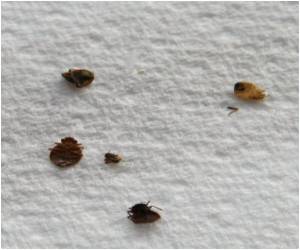Since centuries, bedbugs are a source of menace for people around the globe. The insect generally prefers to dwell in the beds where people sleep; therefore it has derived the name bedbug .

Education about the diagnosis, entomology, active management and prevention can help the physician in detecting the affected people and providing timely treatment.
Our dwellings can become the breeding ground of bedbugs in a variety of ways, such as:
• Through visiting pets, that might bring bugs and their eggs from other infested areas
• Through visitors, who can bring bugs and eggs with their luggage
• Through birds and bats, who might transport bugs or related species like bat bug
• Through false ceilings, crevices, ductwork or electrical outlets
Bedbugs usually bite the host at night. They have a long proboscis and suck human blood for 10 to 20 minutes. There are two tubules in the proboscis. An anesthetizing substance, enzymes, substances that prevents clotting of blood, and vasodilator substances (which relax blood vessels) are released by one tubule that makes the bite painless while blood is sucked through the other tubule simultaneously.
After sucking the blood from the host, these bugs unusually travel into the crevices. Bedbugs are mostly active in temperate environment. In order to kill bedbugs, about one hour exposure is needed to temperatures either below-16°C or above 48°C.
It is a popular misconception that poor hygiene is responsible for the prevalence of bedbugs. Bedbugs are attracted to body heat and carbon dioxide. They nurture on blood and not on waste or excrement. By reducing their hiding places, bugs can be controlled to a great extent.
The bites are quite identical to that of other arthropods. They are clustered on the exposed parts of the skin like limbs and face. The bites may be in a line in a group of three or five.
The bite may be itchy and may appear as a small bump. A small red dot is present in the centre of the lesion. In some rare cases, exacerbations of asthma, severe anemia post bedbug bite and allergic reactions of the skin have also been reported.
A proper diagnosis is needed to avoid misdiagnosis. Often, bedbug bites are confused with the following:
• Mosquito bite
• Scabies
• Spider bite
• Food allergy
• Drug eruptions
• Chicken pox
• Bacterial infection
A recent case report has shown the presence of bacterial colonies like vancomycin-resistant Enterococcus faecium(VRE) and methicillin-resistant Staphylococcus aureus (MRSA) in bedbugs. Though bedbugs are known to carry more than forty different types of microorganisms, yet they are not seen to transmit diseases.
The management of bedbugs involves the following:
• Eradication of bedbugs by effective pesticides such as malathion, pyrethroids and dichlovos. Over time, resistance to pesticides has increased and their usage also poses serious threats to general health and wellness of human beings.
• Mechanical approaches like mattress vacuuming are rapidly becoming popular.
• Carbamate pesticide-propoxur is extremely injurious to bedbugs but it is harmful to children.
The management of the bite of bedbug is symptomatic.
• Oral or topical antipruritic agents along with intermediate corticosteroids can provide relief.
• In some case, topical compounds containing menthol and camphor can provide soothing effect.
• To avoid bacterial infection, oral or topical antibiotics can be given.
• Injectable antihistamines and oral corticosteroids are useful in treating systemic reactions caused by bedbug bites.
Elimination of infestation should be stringently pursued to avoid further bites. This may be achieved by steps suggested by Goddard et al in 2009. These include:
1. Careful and proper identification of bedbug species
• Awareness and education of patients and other occupants regarding the bedbugs
• Proper and thorough inspection of neighboring area and infested area
2. Implementation of pesticide and non-chemical control measures
3. Adequate follow-up ensuring the control of infestation
Bedbug infestation creates chaos and anxiety in patients. A proper diagnosis is required followed by controlling the symptoms of bedbug bite. Corticosteroids and antipruritic agents are helpful in improving the situation. Concluding, it can be said that eradication of the insect and prevention of the bite are the main targets of the therapeutic management.
Reference:
1. Bedbugs: An Update on Recognition and Management; Robyn et al; Skin Therapy Letter 2012.
Source-Medindia






